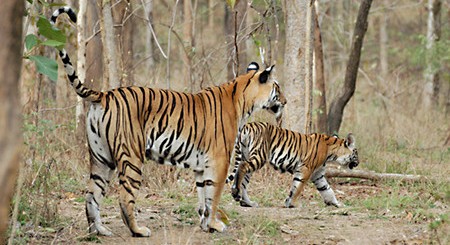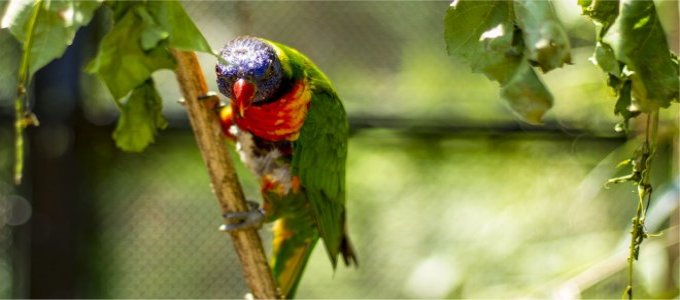Concepts of Biosphere Reserve
The idea of Biosphere Reserves was mooted by United Nations
Educational, Scientific and Cultural Organisation (UNESCO) in 1973
under its Man and Biosphere (MAB) programme for “building scientific
and technical capacity for effective management and sustainable use
of biodiversity” (UNESCO-MAB, 1973, http://www.fao.org/docrep
/x0963e/x0963e08.htm# TopOf Page). Biosphere reserve (BR) is an
international designation coined by UNESCO for representative parts
of natural and cultural landscapes extending over terrestrial or
coastal/marine ecosystems. It consists of areas of terrestrial or
marine ecosystems, which are internationally recognized within
UNESCO’s Man and Biosphere programme for promoting and demonstrating
a balanced relationship between people and nature
(http://www.unesco.org.uk/uploads/biopshere% 20reserves%20faq.pdf).
A biosphere reserve is a unique concept that includes one or more
protected areas and surrounding lands that manage to combine both
conservation, and sustainable use of natural resources. The purpose
of formation of a biosphere reserve is to conserve in situ all forms
of life, along with its support system, in its totality, so that it
could serve as referral system for monitoring and evaluating changes
in natural ecosystems. MAB was launched in 1971 to catalyse a
greater understanding and provision of knowledge and skills to
support sustainable relationship between people and their
environment (http://en.wikipedia.org /wiki/Man_and_the_
Biosphere_Programme). Biosphere reserve acts as a keystone of
MAB by providing a global network of sites for cooperative research
toward this end and demonstrates the sustainable use goals of the
world conservation strategy. The first biosphere reserve of
the world was established in 1979 (http://www2.wii.gov.in/ nwdc/biosphere.htm),
since then the network of biosphere reserves has increased to 580 in
114 countries across the world (UNESCO, 2012;
http://www.unesco.org/new/en/natural-sciences/environment/ecological–sciences
biosphere -reserves/world-network-wnbr/wnbr/). India launched
National Biosphere Reserve Programme in 1979 under Indian MAB (Anon,
1999; http://envfor.nic.in/ divisions/csurv/BR_Guidelines.pdf).
The Ministry of Environment and Forest, Government of India, is
implementing this programme in the country. Currently, there are 18
biosphere reserves operating in India (http://en.wikipedia.org/wiki/
Biosphere_reserves_of_India). Of these, “Achanakmar-Amarkanatak
Biosphere Reserve” is located in the States of Chhattisgarh and
Madhya Pradesh, under the jurisdiction of Tropical Forest Research
Institute, Jabalpur, a national Institute of Indian Council of
Forestry Research and Education (ICFRE) under Ministry of
Environment,Forests and Climate Change, Government of India.
Objectives
1. Objectives of the Biosphere Reserves of the country are as
follows:
2. To conserve biodiversity of flora and fauna within natural
ecosystem.
3. To safeguard genetic diversity of the species.
4. To ensure sustainable use of the natural resources.
5. To provide logistic support to the people, including scientists
and academicians, to undertake research activities and share
knowledge generated on conservation and exchange of information at
national and global levels.
6. To educate and provide training to local inhabitants for their
sustainable socioeconomic upliftment.
Lead Institute : Tropical Forest Research
Institute, Jabalpur (M.P.)
Tropical Forest Research Institute, Jabalpur (M.P.) the proposed
“Lead Institute”, is located nearly 300 km away from the
Achanakmar-Amarkantak biosphere reserve. It is one of the premiers
Institute under the umbrella of Indian Council of Forestry Research
and Education (An Autonomous body under Ministry of Environment,
Forests and Climate Change, Government of India). The Institute has
eight research divisions, viz. Silviculture and Joint Forest
Management, Agroforestry, Forest Ecology and rehabilitation,
Biodiversity and Sustainable Management, Genetics and Plant
Propagation, Non wood Forest Produce, Forest Pathology and Forest
Entomology. Each division has scientists with requisite expertise in
respective field. Besides, the institute has well developed
infrastructure for frequent visits to biosphere reserve, Computer
and Information Technology Section, well equipped laboratories,
herbarium, identified insects maintained as National repository,
insectary and fungal reference collection and library. Thus, the
Institute is very much suited for providing necessary help in
providing effective coordination, management and development of
Achanakmar-Amarkanatk biosphere reserve.
Objectives
a) Collection, synthesis and dissemination of research based
information in respect of
biosphere reserve from all sources.
b)
Interaction with regional research organizations for development of
suitable research projects.
c)
Undertake research and develop data bank.
d)
Maintain regular interface with biosphere reserve managers to assess
the research needs and crucial areas requiring research efforts and
providing research inputs for inclusion in Management Action Plans.
e)
Publication of a compendium of up to date information and bringing
bi-annual publications aimed to educate stakeholders.
f)
Preparation of project document for designation of new biosphere
reserves in coordination with concerned State Government (s).
g)
Formulation of project proposals for designation of Indian biosphere
reserves on World Network of biosphere reserves recognized by
UNESCO.
h)
Any other assignment which may be entrusted by Central/State Govt.
to achieve the larger objectives of the scheme.
Achanakmar-Amarkantak Biosphere Reserve
Achanakmar-Amarkantak Biosphere Reserve is the first biosphere
reserve of Chhattisgarh State and 14th biosphere reserve of the
country, declared by Government of India during the year 2005 (vide
No. 9/16/99 CS/BR dated 30th March 2005). It lies between latitude
220 15’ to 200 58’ N and longitude 810 25’N to 820 5’E and is spread
from Maikal hill ranges to the junction of Vindhyan and Satpura hill
ranges in a triangular shape. Its boundaries start from Kota and
Lormi forest ranges of Bilaspur district in (Chhattisgarh) south to
Rajendragram forest range of Anuppur district (Madhya Pradesh) in
the north and Belgahana forest range of Chhattisgarh in the east to
Dindori forest range of Dindori district in Madhya Pradesh. The
total geographical area of biosphere reserve is 38,35.51 sq. km
(Anon, 2007). It consists of three distinct zones, viz. core zone
with an area of 551.55 sq. ha. in Chhattisgarh state, buffer zone
with an area of 1,95,587.5 sq. ha. in Madhya Pradesh and
Chhattisgarh, and outer most transition zone with an area of
132808.5 sq. ha. in both the states. The core zone has 22 villages
with a population of 7,709 inhabitants whereas the buffer zone and
transition zones have 396 revenue and forest villages in both States
with a population of 4,17,571 inhabitants. In all, 27 communities,
mostly tribal, scheduled castes and other backward classes, live in
the biosphere reserve (Anon, 2012). The biosphere reserve has three
distinct seasons, viz. monsoon, which begins from July and continues
up to October; winter from November to February; and summer from
March to June. The lowest temperature in winter is 2 o C, which
rises up to a maximum of 46 o C in June. The humidity varies from 39
% to 90%.
Floral and faunal attributes
The forest area is about 63.19% and the vegetation of the
Achanakmar-Amarkantak biosphere reserve is tropical deciduous type.
The biosphere reserve is very rich with high density of flora. It
comprises of 1527 species of identified flora, 324 species of
identified fauna (Anon, 2008, 2010) and many more undescribed floral
and faunal taxa. Plant species like the lichen, Caloplaca
amarkantakana, fern, Isoetes bilaspurensis and an angiosperm,
Bothrichloa grahamii are endemic to this region (Upreti et al.,
2005; Upreti and Satya, 2007; Shukla and Singh, 2011).
Twenty eight threatened species of flora (Ved, et al., 2003) and 55
threatened species of fauna (Chandra, 2006) belonging to various
groups have been identified and grouped into different threat
categories regionally as well as globally as per IUCN criteria ver.
2001. The pteridophytes, Ceratopteris thalictroides, Cheilanthes
rufa, Dryoathyrium boryanum, Marginaria macrocarpa, Microsorium
membranaceum, Polystichum auriculatum, Pteris quadriaurita
were sampled in 1970 and thereafter some of the taxa recorded once
or twice in 30 years whereas others could not be recorded and
probably have been extinct from the wild (Saini, 2005; Singh and
Dixit, 2005). Some species of ferns like Adiantum capillus veneris
and Lygodium flexuosum are endangered. Among angiosperms, Rauvolfia
serpentina is critically endangered in the biosphere reserve,
whereas Clerodendrum serratum, Acorus calamus, and Eulophia herbacea
are endangered locally as well as at regional level. Remaining 22
species are, however, found vulnerable (Ved et al., 2003).
Besides these, there are 518 floral species of food and medicinal
values. Seven of them are pteridophytes whereas remaining 511
species are flowering plants of dicotyledons and monocotyledons
(Anon, 2007). Inventory reports on 144 species of grasses belonging
to 71 genera, including an endemic species, Bothriockloa grahamii
(Haines) have been published recently (Anon, 2012). Many forest
invasive species like Lantana, Parthenium, etc. are present in
biosphere reserve and invading the forest areas. Recently, Shukla et
al. (2009) have published a documentary list of invasive alien plant
species of Achanakmar-Amarkantak biosphere reserve.
Among fauna, there are two critically endangered species, viz.
Philautus sanctisilvaticus (Amphibia : Hylidae), Gyps bengalensis
(Aves : Accipitridae) and two endangered species, viz. Notopterus
chitala (Pisces : Notopteridae), Panthera tigris (Mammalia : Felidae)
(Anon, 2008), besides 51 low risk to vulnerable species as per IUCN
categorization (Chandra, 2006). The area of the biosphere reserve
has a known habitat for animals like tiger, bison, bear, spotted
deer, barking deer, panther, wild cat, fox, wild dog, sambhar, four
horned antelope, mouse deer, etc (Anon, 2008). It has rugged terrain
as well as grasslands giving shelter to wildlife in all seasons.
Rich dense forests dominated by sal and its associates give way to
high precipitation further enhancing and promoting moist habitat and
supported plant diversity.
Though a significant progress has been made towards the
understanding of biodiversity of Achanakmar-Amarkantak biosphere
reserve (Anon, 2007, 2008, 2010, 2012), a lot of information
still needs to be explored especially floral and faunal compositions
including forest invasive species, without disturbing the overall
activities of natural biome that serve as natural biological
laboratories for the benefit of local peoples, scientists,
government, decision makers and the world community.

